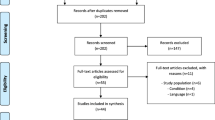Abstract
Objective
To observe the clinical effects of Zhu Lian’s type I excitation needling technique for postpartum urinary retention.
Methods
A total of 60 cases with postpartum urinary retention were recruited and divided randomly into an observation group and a control group, 30 cases in each group. The control group was treated with routine acupuncture, and stimulated with sparse and dense wave of electric acupuncture for 15 min after arrival of needling sensation, and then the needles were taken out. The observation group was treated with Zhu Lian’s type I excitation needling technique, by inserting the needles with the quick inserting method, swift and temporary lifting and thrusting technique for shallow insertion for 5 times, by an in-and-out technique, without retaining the needles.
Results
The total effective rate was 96.7% in the observation group and 83.3% in the control group. The difference in the total effective rate between the two groups was statistically significant (P<0.05). After the treatment, the first urination time was shorter in the observation group than that in the control group, with a statistical significance (P<0.01). After the treatment, the volume of residual urine after the first urination was less in the observation group than that in the control group (P<0.01).
Conclusion
Zhu Lian’s type I excitation needling technique can effectively promote the voluntary urination and bladder emptying in patients with postpartum urinary retention, and it takes effect faster.
摘要
目的
观察朱琏针刺兴奋法一型手法治疗产后功能性尿潴留的临床疗效。
方法
共纳入产后尿潴留患者 60例, 随机分为观察组与对照组, 每组30例。对照组给予常规针刺, 得气后电针疏密波刺激15 min 后出针; 观察 组给予朱琏针刺兴奋法一型手法针刺, 采用快速刺入法进针, 然后迅速短暂地提插浅刺5次, 不留针, 迅速抖出 法起针。
结果
观察组总有效率为96.7%, 对照组为83.3%, 两组总有效率差异具有统计学意义(P<0.05)。治疗后, 观察组首次排尿时间短于对照组, 组间差异有统计学意义(P<0.01)。治疗后, 观察组的膀胱首次排尿后残余尿量 少于对照组, 组间差异有统计学意义(P<0.01)。
结论
朱琏针刺兴奋法一型手法能有效促进产后功能性尿潴留患 者自行排尿及排空膀胱, 且起效迅速。
Similar content being viewed by others
References
Qiu ML. Science of Acupuncture and Moxibustion. Shanghai: Shanghai Scientific and Technical Publishers, 1993: 518–522.
Le J. Obstetrics and Gynecology. Beijing: People’s Medical Publishing House, 2003: 819–827.
Ajenifuja KO, Oyetunji IO, Orji EO, Adepiti CA, Loto OM, Tijani MA, Dare FO. Post-partum urinary retention in a teaching hospital in southwestern Nigeria. J Obstet Gynaecol Res, 2013, 39(8): 1308–1313.
Zhang WH, Feng JC, Liu HQ. Gynaecology of Traditional Chinese Medicine. Beijing: Science Press, 2002: 271–275.
Zhang XH. Therapeutic effect observation on patients with postpartum urinary retention after treatment of hydroacupuncture neostigmine injection at Zusanli (ST 36). Gansu Yiyao, 2016, 35(6): 454–455.
Hong M, Lu CJ. Efficacy observation on acupuncturemoxibustion for urinary retention after surgery for cervical cancer. J Acupunct Tuina Sci, 2015, 13(3): 203–206.
Li CX, Guan L. Clinical observations on electroacupuncture plus pelvic floor muscle training for the treatment of postoperative retention of urine. Shanghai Zhenjiu Zazhi, 2015, 34(6): 550–552.
Song XL, Yu X. Warm needling moxibustion at Zhongji (CV 3) and Zusanli (ST 36) for urinary retention after gynecological surgery. J Acupunct Tuina Sci, 2014, 12(6): 379–382.
Peng XJ, Liang Q, Zhang YC, Du GZ. Research on application of frequently-used acupoints for urinary retention. Zhongyi Zazhi, 2013, 54(23): 2046–2047.
Liu WX, Wu Y, Zhang ZX, Yu YY. Therapeutic observation of warm needling plus acupoint injection for poast-stroke urinary retention. Shanghai Zhenjiu Zazhi, 2015, 34(8): 728–730.
Song XL, Yu X. Warm needling moxibustion at Zhongji (CV 3) and Zusanli (ST 36) for urinary retention after gynecological surgery. J Acupunct Tuina Sci, 2014, 12(6): 379–382.
Zhu L. New Science of Acupuncture and Moxibustion. Nanning: Guangxi Science and Technology Press, 2008: 16–18.
Wei LF, Yue J, Pan XX. Brief introduction of academic thought of Zhu Lian, an expert in modern acupuncturemoxibustion science. Zhongguo Zhen jiu, 2008, 28(9): 667–671.
Xu XY. Observation of preventive effect of nursing intervention on postpartum urinary retention. Zhongguo Yiyao Kexue, 2013, 3(22): 366–367.
Luo WX. Analysis on intramuscular phentolamine injection for 50 cases with postpartum urinary retention. Zhongguo Xiandai Yaowu Yingyong, 2008, 2(17): 104.
Yu XT. Therapeutic effect observation on bladder function training for intractable postpartum urinary retention. Guoji Yiyao Weisheng Daobao, 2012, 18(14): 2017–2019.
Gan FR. Discussion on acupuncture-moxibustion for Wu YX. Observation on external therapy for 90 cases with postpartum urinary retention. Hunan Zhongyiyao Daobao, 1996, 2(5): 21–26.
Li CX, Guan L. Clinical observation on electroacupuncture plus pelvic floor muscle training for the treatment of postoperative retention of urine. Shanghai Zhenjiu Zazhi, 2015, 34(6): 550–552.
Wu YX. Observation on external therapy for 90 cases with postpartum urinary retention. Zhongguo Xiandai Yisheng, 2010, 48(12): 133–134.
Zhou LY, Li J, Li CM, Yu ZG, Zhang WL, Zheng M, Meng QG, Wang FY, Sheng ZG. Observation on therapeutic effect of electroacupuncture at points Baliao and Huiyang (BL 35) on retention of urine induced by spinal cord injury. Zhongguo Zhen Jiu, 2006, 26(4): 237–239.
Author information
Authors and Affiliations
Corresponding author
Rights and permissions
About this article
Cite this article
Zheng, Fw., Pan, Xx. & Chen, Wl. Observation on clinical effects of Zhu Lian’s type I excitation needling technique for postpartum urinary retention. J. Acupunct. Tuina. Sci. 15, 300–304 (2017). https://doi.org/10.1007/s11726-017-1018-7
Received:
Accepted:
Published:
Issue Date:
DOI: https://doi.org/10.1007/s11726-017-1018-7
Keywords
- Acupuncture Therapy
- Electroacupuncture
- Zhu Lian
- Postpartum Period
- Urinary Retention
- Female
- Famous Doctor’s Experience




